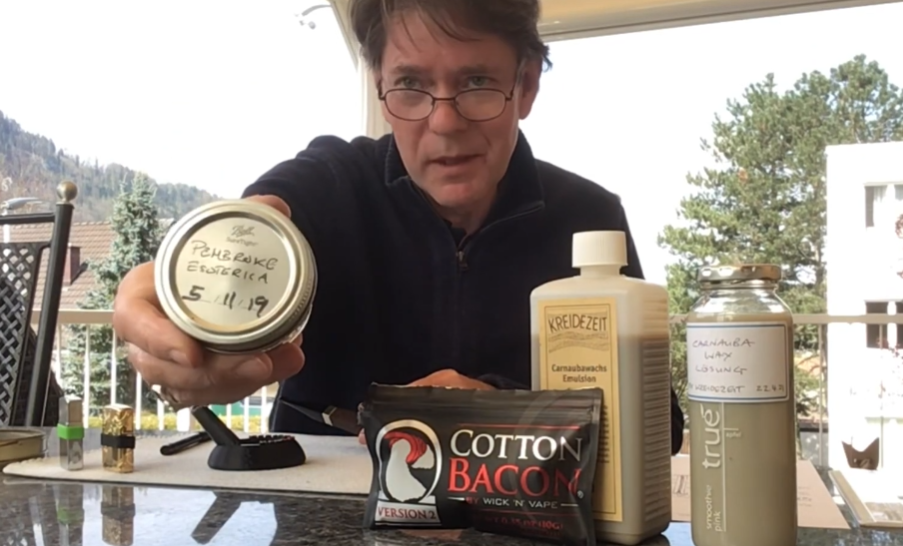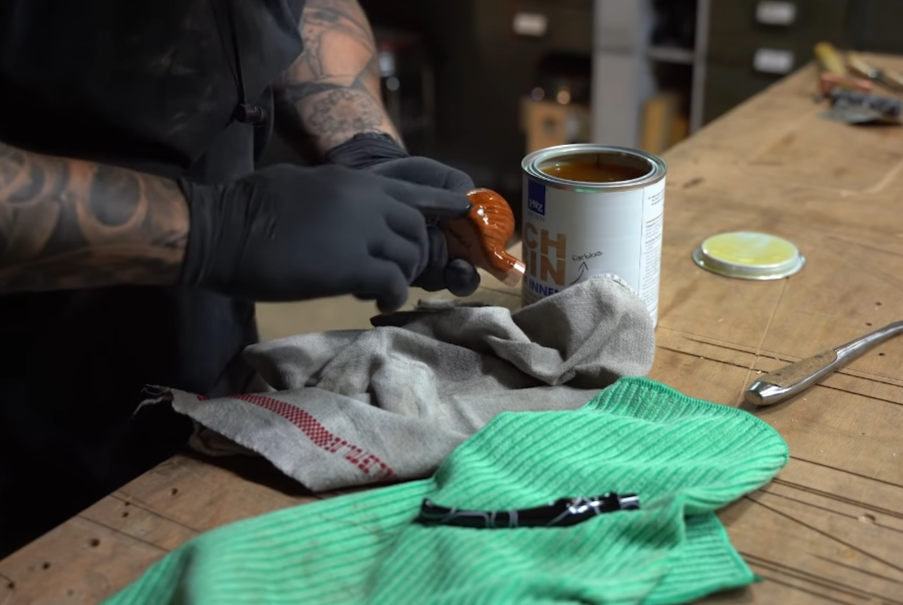Has it ever been difficult for you to maintain your favorite Handmade wooden pipe? Waxing not only makes pipes stand out but also prolongs their life if done correctly.
Actually, waxing is easy! Follow my steps and with some basic supplies, you can give your pipe a nice shine in no time at all…
After that, I’ll guide you through each step of waxing. Soft cloths, brushes, wax blocks–items you probably have around the house will be used. I will also suggest ways to handle various parts of the pipe so as to provide maximum protection. So let us begin!
Why do you need to wax a briar pipe?
I know a lot of pipe smokers skip waxing their briar pipes, but taking the time to wax your own pipe does have a lot of benefits
such as When you light up, the heat evaporates the wood’s natural oils, drying it out over time. Putting on a thin layer of wax seals in moisture and prevents cracks and splits from forming. Beeswax or carnauba wax work great – just rub some into the bowl and buff it out to a nice shine with a soft cloth.
A well-waxed bowl not only looks gorgeous, but it’ll resist burn marks and charring way better. The wax creates a barrier between the burning tobacco and the briar surface.
Waxing also fills in those tiny crevices in the wood. This makes for a much smoother smoke as the wax helps season the bowl. Your tobacco will glide smoothly across the polished interior with just the right amount of friction.
so I was each of my pipes after every few bowls to keep them looking and smoking like new.
What type of wax should you use for a briar pipe?

Carnauba wax is just the hard wax you’d wanna use for getting that perfect shiny polish on pipes. Just buff it on real soft and gentle with a wheel, and you’ll get that smooth, glossy finish pipes deserve. In addition, beeswax is also a good choice, it’s nice and soft, giving pipes a mellow luster. It’s great for stabilizing any loose parts on tenons and such. Especially if you use a meerschaum pipe, this wax is the best choice.
In addition, there is also a microcrystalline fossil wax, That microcrystalline fossil wax, it offers awesome moisture resistance and protection from heat and fingerprints. It’s the choice for preservation and restoration work, no doubt. Steer clear of the petroleum paraffin waxes though – they can dry out the briarwood. Some purified mineral oils might just be tolerable in small amounts I reckon.
100% pure plant waxes like beeswax and carnauba are best for briar pipes in my book. They protect really nicely and give that optimal polish over time. And they’re safe for prolonged contact, which is key. Both can shine up wood just right, but Carnauba’s the winner for pipes, I’d say.
But I still recommend that when buying a wax product specially made for pipes, check the ingredients and purity. We all want to use the best wax for our pipe.
How to wax a wood pipe?

I assume a good number of us may not have Carnauba wax at home. However, there is no need to worry. You can easily make your own blend out of beeswax for conditioning your briar pipes!
Requirements include pure beeswax and coconut or olive oil from your pantry. Take a chunk of beeswax, tear it until soft then put it in the microwave and add one to two teaspoons of oil. Leave the mixture until it feels creamy and balmy. Just mix some more oil if it’s too thin so as to get the desired thickness.
Here is how you apply your Beeswalk cream when the time comes; gently rub some out with your finger all over the warm bowl as well as stem such that every surface gets coated with this substance. Massage it thus that the Briarwood absorbs the conditioning beeswax residue. Over time, through repeated waxings, a pipe will develop a rich deep red-brown patina.
This beeswax blend might be used on joints for easier connection too by simply smearing it like a lubricant
Are there any tips for getting an even wax coat over the entire pipe?

After slathering on the wax, polish up that surface with a soft cloth, going with the wood grain. Also, rub it in small circles to really work that wax into the briarwood. I used to buff off all the extra wax completely with a cotton swab. But these days, for faster waxing, I just use a shoe brush to polish it up quickly. This brushes away any leftover wax and shines up that pipe surface really nicely.OK, When we have completed all the steps, is your pipe brand new? If you have any other questions, please leave a message below our blog

